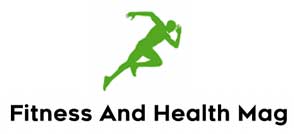“Too much salt is bad!” How many times have we heard this? Many, although as we often say, generalizing when it comes to health and well-being is wrong. For this reason, recently, on the occasion of the “World Week for the Reduction of salt consumption 2023”, a real awareness campaign is underway aimed at a functional and conscious use of this element that we all use daily.
Let’s start with an assumption: the perception of salty taste manifests itself around 2-6 months of life. And from that moment, our problems seem to start, which can manifest themselves even after 50-60 years. It is, therefore, no coincidence that more than 15 million people currently suffer from hypertension, and a considerable part does not know it.
Where Does The Need To Consume Salt Come From?
All mammals need adequate regulation of the amount of fluids in their body (in particular, of the volume of blood that supplies all the tissues) and of the tone of the arteries, which ensures the pressure necessary to push the blood up to more peripheral districts. “Kitchen” salt, more precisely sodium chloride (NaCl), consisting of 60% chlorine and 40% sodium by weight, present in food or water, has been the nutritional solution to this need.
Of the two constituent elements of salt, sodium is the one that determines the effects on the volume and tone of the arteries. The metabolism of sodium (Na+) is strictly correlated with potassium (K+);. At the same time, the first cation, as we have said, is mainly found in body fluids outside the cell. Potassium is primarily concentrated in intracellular fluids and balances the presence of external sodium. The intake of both ions is therefore limited by the inevitable loss of liquids that accompanies the preparation of food, and this is undoubtedly one of the factors that have generated the practice of adding salt to foods.
A Bit Of History: From The Pre-Neolithic To Today!
When and where did the use of salt “in the kitchen” begin? Well, Pre-Neolithic nutritionists did not know how to add salt to foods. The dietary source of salt is estimated to be no more than 1 gram per day, a share naturally contained in foods. The diet of our ancestors until a low sodium/potassium ratio characterized the Neolithic: this is why they had evolved and “selected” with a genotype such as to have robust mechanisms for conserving sodium.
It is assumed that around the seventh millennium BC, man began to use salt to preserve meat, which, consumed a short time after being hunted, did not require conservation in salt. This practice would seem to have “attenuated” and rebalanced the Na+/K+ ratio. Currently, the Western world consumes about 10 g of salt daily, a value ten times higher than what we are “programmed” for. The correlation between sodium and primary hypertension has, in fact, only had an unequivocal demonstration in relatively recent times. In societies where salt is unknown, the percentage of the population that develops hypertension problems with age is zero, even if the person smokes, drinks alcohol, or eats meat.
What Are The Benefits Of A Low-Salt Diet?
More than 15 million are affected by hypertension, and a considerable part does not know it. The salt in industrial foods or foods consumed away from home is more than 75%, and that added in home preparations is only about 10%. A low-salt diet brings several benefits: it lowers blood pressure and decreases the onset of heart attacks and strokes, improves heart, blood vessel, and kidney function, increases bone strength, and reduces water retention.
The Importance Of The “Awareness-Prevention” Combination: 8 Tips To Try
Preventing the habit of eating salty foods is the first primary rule against the onset of arterial hypertension associated with correct lifestyles, such as proper management of stress, abstention from smoking, and regular physical activity. Our palate can be trained gradually to decrease swappiness, even if it has been demonstrated that a period ranging from 3 to 6 weeks is needed to reprogram the perception of salty taste. In this sense, various suggestions that we find in the guidelines of the National Research Institute for Food and Nutrition are of great help :
- Gradually reduce the use of salt until it is eliminated.
- Prefer salt enriched with iodine (iodized salt) to ordinary salt.
- Do not add salt to baby food, at least throughout the first year of life.
- Flavor foods with aromatic herbs (such as garlic, onion, basil, parsley, rosemary, sage, mint, oregano, marjoram, celery, leek, thyme, and fennel seeds) and spices (such as pepper, chili pepper, nutmeg, saffron, curry ).
- Choose low-salt product lines (salt-free bread, low-salt canned tuna, etc.) when available.
- Drain and rinse canned legumes and vegetables before consuming them.
- Only occasionally consume processed foods high in salt (salty snacks, bagged chips, table olives, cold cuts, and cheeses).
- In moderate sporting activities, replenish the liquids lost through sweat with plain water.
